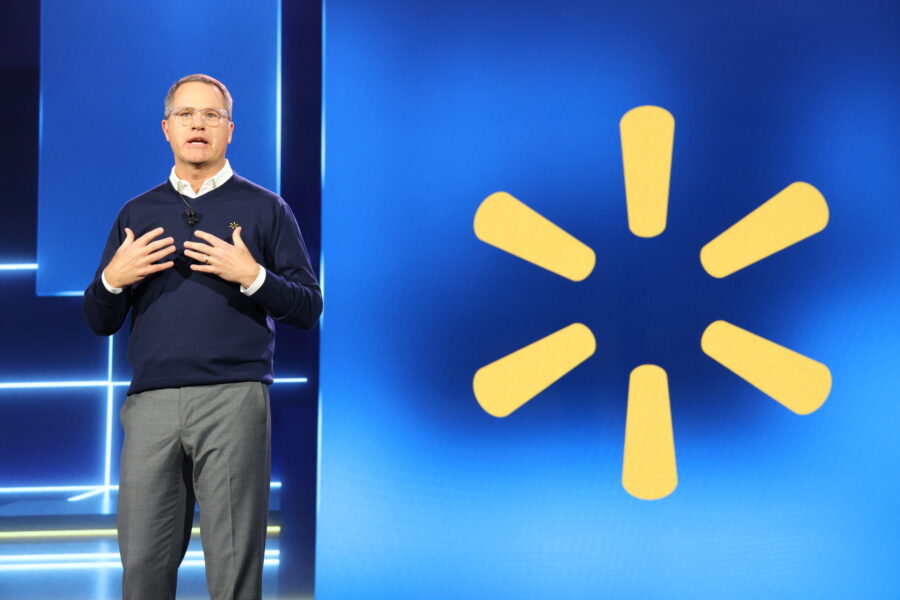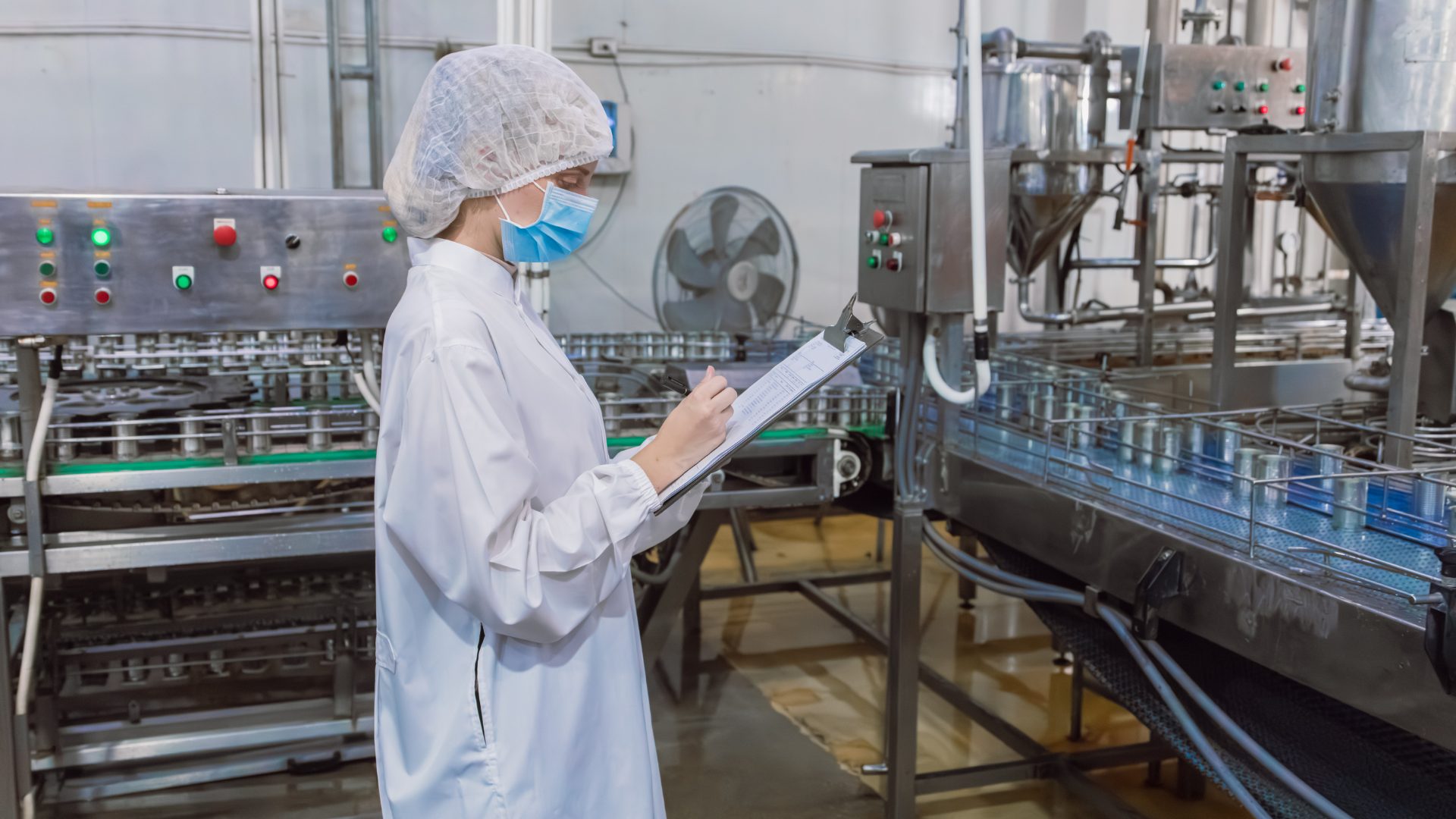By the end of his keynote speech at CES 2024, Walmart CEO Doug McMillon had made one thing clear: the world’s most powerful retailer is focused on improving the lives of its consumers, associates – even the landscape itself – with the next evolution of retail shopping known as Adaptive Retail.
“Advances in technology make you feel anything is possible,” McMillon said, noting that Walmart’s roadmap is compelling, and that as collective business leaders, today’s retailers and specialty shop owners need to decide to either prioritize technology or take a more nuanced approach – use technology to serve associates and consumers, allowing them to accomplish tasks and/or discover, purchase, and get what they need in more efficient and enjoyable ways.
Early in his keynote, McMillon described Walmart as a “people-led, omnichannel retailer dedicated to helping people save money and live better.” There’s a historic precedent to this as he shared a clip of Sam Walton, Walmart’s founder, 19 days before his death from multiple myeloma in 1992. Walton had just accepted the Presidential Medal of Freedom from George H.W. Bush, and stated, very clearly despite his advanced cancer, “We’ll lower the cost of living for everyone; not just in America, but we’ll give the world an opportunity to see what it’s like to save and have a better lifestyle for all.”
It was an oddly touching moment – in the packed house of the Las Vegas Convention Center at the world’s No. 1 tech show in 2024, the clip – brief, simple, clear, and embedded below – could have been filmed yesterday. Walton holds a microphone and sports a glimmering white Walmart hat as the dark blue medal rests against his chest with the president and first lady looking on.
In 1992, Walmart was just shy of its 30th anniversary and employed about 400,000 people. It counted annual sales of nearly $50 billion from over 1,700 Walmarts, 212 Sam’s Clubs, and 13 Supercenters.
Today, Walmart has over 10,000 stores under various names operating in 24 countries; its fiscal year revenue in 2023 was over $610 billion. It operates over 3,500 Supercenters and over 600 Sam’s Clubs.
And they’re all about to change.
Swift Checkout at Sam’s Club
McMillon and Walmart are not afraid of change. In a society “driven by data,” McMillon said that designing new roles due to (or in spite of) AI is often most beneficial for those whose roles are changing – with over 2.1 million employed associates, many report new or expanded roles as more enjoyable with higher pay.
Megan Crozier next took the stage. Crozier is chief merchant at Sam’s Club and introduced its new Scan & Go feature; using the Sam’s Club mobile app, customers can scan items as they add them to their carts anywhere in the store. Once finished, they can pay, get a digital receipt, and exit the store through a Walmart-blue gate that scans and recognizes their mobile and the embedded digital receipt. No lines. No problem.
“Eliminating a few seconds at checkout is huge,” the executive and mother noted; less time in store means more time doing what consumers love. Crozier expects the full implementation of Scan & Go to be running in the next 18 months or so at Sam’s Clubs nationwide.
Shop with Friends
The best names are sometimes the simplest. That’s what Latriece Watkins, chief merchant at Walmart U.S., made clear. After repeating McMillon’s (and Walton’s) mantra to “help people save money and live better,” Watkins described how Walmart is bringing more style and personalization to home decor and beauty.
“Creating a great shopping experience starts with the largest store – the one closest to you – the Walmart app,” she said. Its new feature, Shop with Friends, allows users to preview different clothes and styles, swapping items on and off a digital avatar. From there, looks can be sent to friends for further input, offering “one more way to create an engaging and interactive experience for customers and their friends.”
AI Helps Offer a Seamless InHome Delivery Experience
After Watkins, McMillon described the next iteration of home delivery – InHome Delivery. The service will be available to paid subscribers of Walmart+; using AI, InHome Delivery should help restock refrigerators with “perfect cadence” as the program learns more about habits, consumption times, and favorites with each passing purchase.
“It’s not a subscription,” McMillon was quick to verify, “it’s a personalized service that adjusts based on changing needs when and where you need it,” with item delivery fulfilled by Walmart associates directly into the garage refrigerator, freezer, or even into the kitchen.
Defining Adaptive Retail
Next, McMillon brought out two tech CEOs – first the chairman and CEO of Microsoft, Satya Nadella, followed by Walmart’s CTO, Suresh Kumar.
Both spoke about the large-language models Walmart’s AI uses, which will help create a more intuitive browsing and search experience, whether preparing for something like Superbowl Sunday or whether browsing how to fill the kitchen pantry for the next week for the family.
“It’s the most exciting time to be in retail and technology,” Kumar said, adding that technology is driving a fundamental shift across all areas of retail, but particularly in:
- Discovery – how to discover new and complementary products.
- Purchase – customers want more frictionless payment options.
- Receive – the experience customers have via delivery, pickup, in-home.
“Shopping today is an offline and online experience,” he said, “and [Walmart] is bringing the best aspects of all channels. This is adaptive retail – every engagement is interconnected, frictionless, and exceeds expectations. We are not thinking separately about e-commerce or in-store; we are designing one adaptive, seamless experience.”
To do so, McMillon then explained how Walmart has spent years consolidating its three supply chains into one interconnected, interwoven, interdependent model that not only adjusts for demand and inventory, but moves over 100 billion products based on season, weather conditions, traffic, and even what’s trending on social media.
“There’s never been a more transformational change in our supply chain like right now,” he said.
“Tomorrow’s supply chain should do two things,” Kumar chimed in. “It should forecast what customers want when they want it, and it should orchestrate the movement of different products that need to be stored in different ways, balancing supplier needs and customer convenience.”
Kumar noted that the main job of the AI-empowered supply chain of tomorrow is to simply ensure product availability wherever customers need – and demand – it the most.
“Technology has never been more fundamental to the retail experience,” he concluded. “It makes the retail experience more delightful, more intelligent, more connected from discovery to purchase to receipt. Our innovations will help us anticipate and react.”
Walmart Takes to the Skies
McMillon then introduced Prathibha Rajashekhar, whose 13-year career sees her leading automation and innovation in Walmart’s supply chain.
“Think of our supply chain as an invisible layer that digitally orchestrates where and how we move goods across the supply chain,” she summarized.
Rajashekhar stressed that Walmart continues to evolve the many ways it can get goods into consumers’ hands, whether through InHome delivery, Express delivery, even via drone – Walmart has been trialing drone delivery across 37 states and completed more than 20,000 deliveries via drone last year, more than any other retailer. One intriguing fact she pointed out was that 75% of Walmart’s 120,000 items sold in a supercenter meet the size and weight requirements of drone delivery, which is powered by on-demand delivery partners Wing and Zipline.
She highlighted Walmart’s success in drone delivery in the Dallas / Fort Worth urban center of Texas, one of the fastest-growing metros in America. “This is a huge step forward in retail,” she concluded.
Energy & People Transformation
McMillon’s keynote ended in a similar place where it began – with people. He introduced Vishal Kapadia, one of Walmart’s Energy Transformation leads, and Donna Morris, Chief People Officer. Both executives highlighted the groundbreaking work Walmart has done (and has planned), offering regenerative agriculture and renewable energy initiatives as well as an increased emphasis upon rewarding associates who want to create better lives for themselves through promotion and skills learning.
Some of the energy and people-powered highlights included:
- Walmart is powered by 47% renewable energy.
- 63% of global private-brand packaging is reusable, recyclable, or compostable, and hope to be 100% by the end of 2025.
- Walmart divests 70% of its waste from landfills.
- 50% of operations should be powered by renewable energy by the end of 2025.
- Walmart will bring nearly 10 gigawatts (GW) of energy via clean-energy projects by 2030 – enough to power more than 2 million homes.
- Walmart will greatly expand its EV-charging capabilities with high-speed chargers by 2030.
- Almost 400,000 associates buy company stock (almost 40%) through incentive programs.
“Most companies are focused ruthlessly on being great for their customers through technology,” Morris concluded. “We believe it is essential to bring that exact same experience to our own associates. Our tech tools help associates improve their jobs and equip them with the skills for the future, creating the opportunity to turn a job into a career.”
To conclude the keynote, McMillon repeated the mantra of today (and tomorrow’s) new-look Walmart: “We choose to be a company that helps people to live better and that uses technology to serve people and not the other way around. We leave communities and society better than we found them.”
“Adaptive Retail is a story about people who are learning and adapting to make that future real,” he said.
“Choose a future that puts people first – if we keep doing that, we can help people around the world live a better life. That’s what we want to do – that’s the world we want to help create.”










